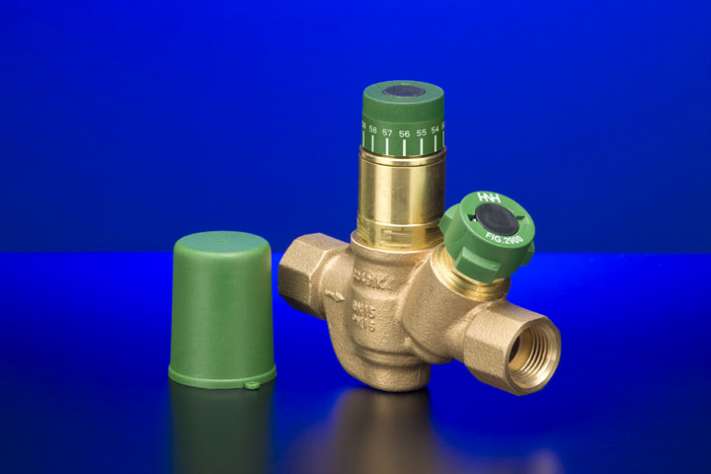Hattersley has launched a new range of Thermal Circulation Valves (TCVs), designed for use in domestic hot water systems to help kill Legionella bacterium which causes the deadly Legionnaires’ disease.
The Hattersley TCV range is WRAS approved and available in sizes DN15 low flow and DN15 & DN20 standard flow. The valve is compact and includes an isolation valve, thermometer access point and a settable temperature sensing cartridge which is pre-set at a standard 57°C.
The installation of a TCV into hot water systems ensures that the water is maintained at a temperature that Legionella cannot survive in. Hattersley’s new TCV range aids self-balancing and thermostatically controlled regulation of water flow and thermal disinfection. This type of thermal circulation also reduces commissioning time and therefore cost too.
Sizing & selection of TCVs is very important and Hattersley offer a comprehensive and free service to ensure that the appropriate size is chosen.
There is a legal requirement for designers and installers of domestic hot water systems to consider the risk of Legionella. One way that contractors and specifiers can demonstrate their compliance with the law, is to follow the HSE (ACOP) L8 guideline’ and installation of the new Hattersley TCV will assist in achieving this. Further details can be found in the Health & Safety at Work Act (HSWA), 1974 and also in the Control of Substances Hazardous to Health Regulations (COSHH).
Legionella is present in domestic hot water systems and thrives between 20°C and 45°C, multiplying most rapidly at an optimum temperature of about 37°C. Legionella becomes a high risk to humans when aerosol droplets are generated. This is most common in cooling towers, hot water systems, showers, taps and whirlpool spa baths. The most high risk projects include hospitals, hotels, sports & health and education facilities.
In Europe it is believed 6000 cases of Legionnaires’ disease are diagnosed every year. While in 2010 more than 350 cases were identified in the UK with approximately 10% of these resulting in fatalities*
*Health Protection Report Vol. 6 No. 9, March 2012
